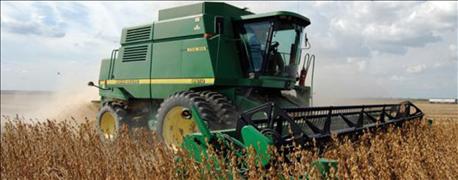
Nearly 40 years after its discovery in the upper Midwest, the soybean cyst nematode (SCN) continues to be a highly damaging pathogen of soybeans in Iowa and surrounding soybean-producing states. SCN is a tiny, microscopic worm that attacks soybean roots and steals yield.

CHOOSE CAREFULLY: Not all SCN resistant soybean varieties provide the same level of control. Also, prolonged widespread use of PI 88788 SCN resistance genes has led to selection for SCN populations with increased reproduction on varieties with PI 88788 source of resistance.
SCN is most damaging in hot, dry growing seasons, but yield losses of 10% to 25% or more can occur in years when temperatures are moderate and rainfall is average or above average. That’s according to Greg Tylka, Iowa State University Extension plant pathologist and nematologist. “Growing SCN-resistant soybean varieties can slow the build-up of SCN population densities (numbers) in the soil and produce profitable soybean yields in SCN-infested fields,” says Tylka. He offers the following information and advice on choosing SCN resistant varieties to plant on your farm in 2017.
Lots of choices are available for farmers to plant
Each year, Iowa State University compiles a list of SCN-resistant soybean varieties that are available to Iowa farmers. The list was just recently updated. This effort is funded by the soybean checkoff through the Iowa Soybean Association. The publication is available to download for free here from the ISU Extension Publication store.
There are more than 950 varieties from 34 seed companies and ISU included in the publication. The source of SCN resistance, relative maturity rating, herbicide resistance, and iron deficiency chlorosis tolerance of the varieties are included in the list.
However, there’s not much diversity of resistance
Although there are many SCN-resistant varieties available for Iowa soybean farmers, almost all (97%) contain resistance genes from a single soybean breeding line, named PI 88788 (see figure below). There are 81 more SCN-resistant soybean varieties in the 2016 publication than there were in 2015, but only two more SCN-resistant varieties with resistance from a source other than PI 88788 than in 2015. The prolonged, widespread use of PI 88788 SCN resistance genes has led to selection for SCN populations with increased reproduction on varieties with the PI 88788 source of resistance.

Figure 1. Number of SCN-resistant soybean varieties in maturity groups 0, 1, 2, and 3 for Iowa soybean farmers, 1991 to 2016.
All SCN-resistant soybean varieties are not created equal
Resistance to SCN in soybeans is provided by several genes, and not every resistant soybean variety receives all of the resistance genes during the breeding process, even if they are bred from the same resistance source, such as PI 88788. Consequently, not all SCN-resistant soybean varieties provide the same level of nematode control.
ISU has annually evaluated nematode control and yield of SCN-resistant varieties in numerous field experiment conducted in SCN-infested fields throughout Iowa since the early 1990s. The work currently is funded by the soybean checkoff through the Iowa Soybean Association.
Results of the variety evaluation experiments are compiled in an annual report that is printed and mailed throughout Iowa via the media. The report also is available to download for free here from the ISU Extension Publication store. Finally, the variety trial result reports dating back to 1997 are available online at isuscntrials.info.
More information about the biology and management of SCN available at soybeancyst.info and at soybeanresearchinfo.com/diseases/scn.html.
About the Author(s)
You May Also Like




